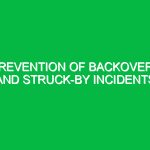Introduction
Safe installation of roofing materials is crucial in the construction and maintenance of buildings. It encompasses practices that ensure the health and safety of workers and the environment while installing various roofing systems. The relevance of this topic in the Health, Safety, and Environment (HSE) domain cannot be overstated. Proper installation not only protects the integrity of the structure but also minimizes risks associated with roofing work, such as falls, injuries, and environmental damage. This article explores the essential aspects of safe roofing installation, including potential hazards, safety precautions, best practices, and applicable regulations.
Understanding the Hazards Associated with Roofing Installation
Roofing installation involves numerous hazards that can pose serious risks to workers. Understanding these potential hazards is the first step towards creating a safe working environment.
1. Falls from Heights
Falls are the leading cause of injuries and fatalities in roofing. Workers often operate at significant heights, making falls a constant threat. Factors contributing to falls include unprotected edges, lack of proper fall protection systems, and slippery surfaces due to weather conditions.
2. Electrical Hazards
Roofing projects frequently involve working near power lines or the installation of electrical components. Contact with live wires can result in severe injuries or fatalities. Additionally, using electric tools and equipment poses its own set of risks.
3. Material Handling Risks
Roofing materials can be heavy and awkward to handle. Improper lifting techniques can lead to musculoskeletal injuries. Moreover, the risk of materials falling from heights can endanger both workers and bystanders below.
4. Weather-Related Hazards
Weather conditions, such as high winds, rain, or extreme heat, can significantly impact safety during roofing installation. Working in adverse weather increases the risk of slips, falls, and heat-related illnesses.
5. Chemical Exposure
Roofing materials often involve chemicals that can be harmful if inhaled or if they come into contact with skin. For example, adhesives and sealants may emit fumes that can cause respiratory issues.
6. Lack of Proper Training
Inadequate training can lead to unsafe practices. Workers who are not familiar with roofing techniques or safety protocols can inadvertently create hazards for themselves and others.
Safety Precautions for Roofing Installation
Implementing safety precautions is vital for reducing risks associated with roofing installation. Here are several measures that can enhance safety on the job site.
1. Utilize Fall Protection Systems
Employing fall protection systems, such as guardrails, safety nets, and personal fall arrest systems, is essential. Workers should be trained on how to properly use these systems to prevent falls.
2. Conduct Site Assessments
Before commencing work, conduct thorough site assessments. Identify potential hazards and ensure that safety measures are in place. This includes checking the stability of ladders and scaffolding.
3. Use Proper Lifting Techniques
Train workers on proper lifting techniques to minimize the risk of musculoskeletal injuries. Encourage team lifting for heavier materials and provide equipment like hoists or dollies to assist with transport.
4. Monitor Weather Conditions
Before starting work, check the weather forecast. Cease operations during inclement weather, such as rain or high winds, to reduce the risk of accidents.
5. Implement Chemical Safety Protocols
Ensure that all workers are aware of the chemicals they may encounter and provide appropriate personal protective equipment (PPE), such as gloves and respirators. Proper ventilation should also be ensured when using any chemical products.
6. Provide Comprehensive Training
Investing in training programs for workers can significantly enhance safety. Topics should include proper installation techniques, hazard recognition, and emergency response procedures. Regular safety meetings can also reinforce these lessons.
Best Practices for Safe Installation of Roofing Materials
Implementing best practices can help ensure the safe installation of roofing materials. These practices are not only about compliance but also about fostering a culture of safety.
1. Develop a Safety Plan
Create a detailed safety plan tailored to the specific roofing project. This plan should outline safety protocols, emergency procedures, and roles and responsibilities for each worker on the site.
2. Use Quality Materials
Using high-quality roofing materials can reduce the likelihood of failures that could lead to accidents. Ensure that all materials meet industry standards and are suitable for the specific application.
3. Maintain Equipment Regularly
Regular maintenance of tools and equipment is critical for safety. Inspect all equipment before use to ensure it is in good working condition. Replace or repair any faulty tools immediately.
4. Establish Clear Communication
Clear communication among team members is essential for safety. Use radios or hand signals to communicate effectively, especially when working at heights or in noisy environments.
5. Ensure Proper Waste Disposal
Implement a waste management plan to ensure that debris and waste materials are disposed of responsibly. This reduces the risk of slips and falls on the job site.
6. Conduct Regular Safety Audits
Regular safety audits can help identify areas for improvement. Use these assessments to refine safety protocols and ensure compliance with HSE regulations.
Regulations and Standards Governing Safe Installation of Roofing Materials
Various regulations and standards govern the safe installation of roofing materials. Understanding these guidelines is crucial for compliance and ensuring worker safety.
1. Occupational Safety and Health Administration (OSHA) Standards
In the United States, OSHA sets the standards for workplace safety, including roofing. OSHA regulations outline requirements for fall protection, use of personal protective equipment, and training for workers in the roofing industry.
2. National Fire Protection Association (NFPA) Codes
The NFPA establishes codes and standards related to fire safety, including those applicable to roofing materials. Compliance with these codes helps reduce fire hazards associated with roofing installations.
3. American National Standards Institute (ANSI) Guidelines
ANSI provides guidelines for various safety practices in the construction industry. Adhering to ANSI standards can enhance safety protocols during roofing installation.
4. Local Building Codes
Each locality may have specific building codes that govern roofing installations. It is vital to be familiar with these regulations to ensure compliance and safety.
Conclusion
The safe installation of roofing materials is a multifaceted endeavor that requires attention to detail and a commitment to safety. By understanding the potential hazards, implementing safety precautions, and adhering to regulations, roofing professionals can create a safer work environment. Prioritizing safety not only protects workers but also enhances the integrity of the roofing system and contributes to the overall well-being of the community. Through continuous training, communication, and adherence to best practices, the industry can move towards a future with fewer accidents and a stronger safety culture.


